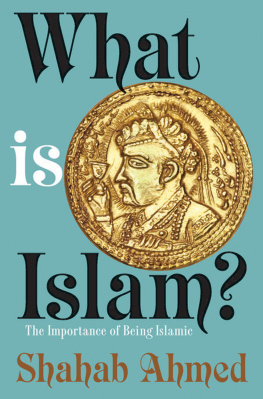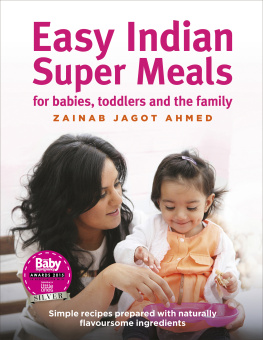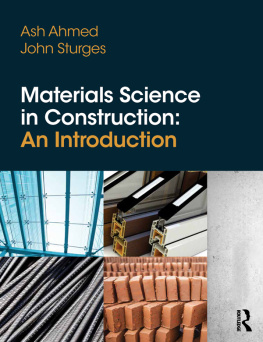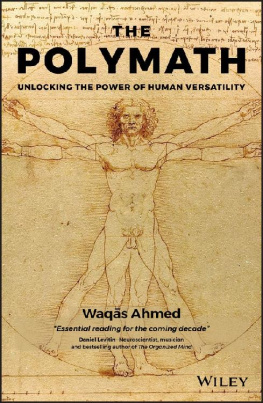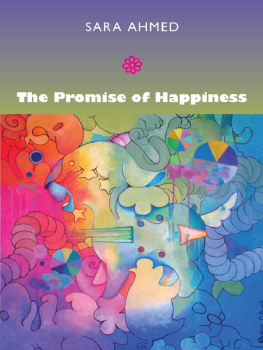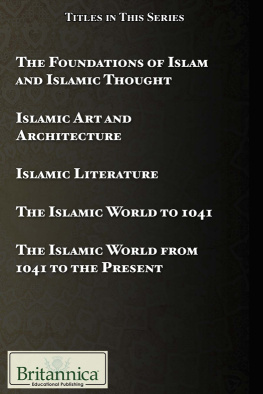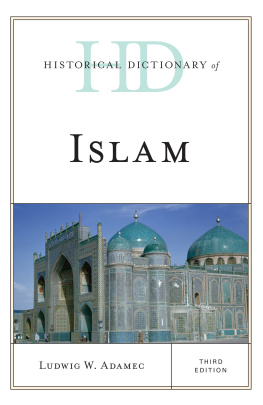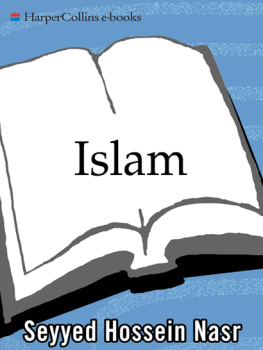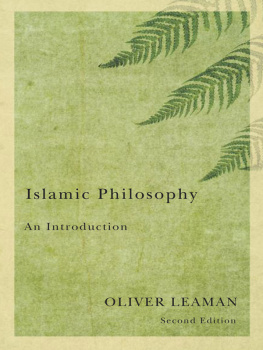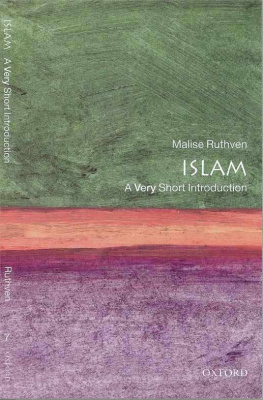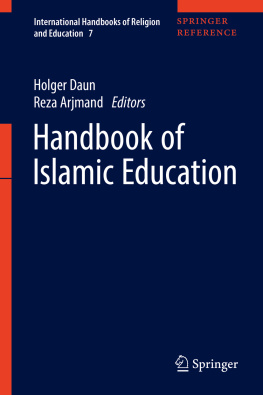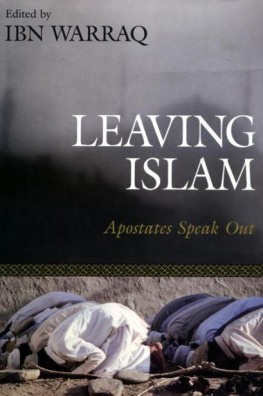
What Is Islam?
What Is Islam?
The Importance of Being Islamic
Shahab Ahmed
PRINCETON UNIVERSITY PRESS
Princeton and Oxford
Copyright 2016 by Princeton University Press
Published by Princeton University Press, 41 William Street, Princeton, New Jersey 08540
In the United Kingdom: Princeton University Press, 6 Oxford Street, Woodstock, Oxfordshire OX20 1TW
press.princeton.edu
Jacket image Heritage Auctions.
All Rights Reserved
ISBN 978-0-691-16418-2
Library of Congress Control Number: 2015948828
British Library Cataloging-in-Publication Data is available
This book has been composed in Linux Libertino O
Printed on acid-free paper.
Printed in the United States of America
1 3 5 7 9 10 8 6 4 2
Analysis is the distinguishing of things that exist sound and true in combinationbut that have become confused in the mindin such a way that each of them is rendered separate from the others in its potential and in its definition; or in such a way that each of them comes to indicate the existence of the other, so that when one considers the state of one of them, one is transported from the one to the other.
Al-Shaykh al-Ras Ab Al Ibn Sn
[Avicenna] (980-1037 A.D.)
They do not comprehend how a thing agrees at variance with itself; it is an attunement turning back on itself, like that of the bow and the lyre.
Heraclitus (fl. ca. 487521 B.C.)
For my parents,
who raised me in the Islam of their cosmopolitanism
and in the cosmopolitanism of their Islam
Contents
Illustrations
Preface
T HE FIRST DRAFT of this book was written between January 2012 and September 2013 while I was teaching fulltime as Associate Professor of Islamic Studies at Harvard University. A visiting appointment as Lecturer on Law and Research Fellow in the Islamic Legal Studies Program at Harvard Law School in the academic year 201415 enabled me to revise the manuscript between July 2014 and November 2014.
In making revisions, I deliberately chose not to look at any material published in 2014 (and it is likely also that I have missed some salient material published in 2013 that was slow to come to hand). I apologize to any authors I have neglected, and to my readers for any shortfall that this has incurred.
This book draws on a range of primary source material translated from various languages. Unless otherwise indicated in the footnotes, all the translations have been done by mebut not without the privilege of having consulted expert friends and colleagues who have graciously disputed, corrected, confirmed, or simply tolerated my renderings: Mohsen Goudarzi (Arabic and Persian), Moeen Lashari, Amer Latif and Hasher Ahmed Majoka (Panjabi, Siraiki, and Urdu), Sukidi Mulyadi (Javanese and Malay), Himmet Takmr (Ottoman), and Muammad Musin Khn and Sayyid Muammad Khlid (Pasht). I am most grateful.
I have provided full transliterations of all those passages from primary texts that I have translated in , since these passages are foundational to the argument. In subsequent chapters, in the interest of making the book no longer than necessary, I have only supplied transliterations asab al-arrah. Rather than follow any single established transliteration system, I have followed the principle that the original orthography (rasm al-kha) should be represented as far as is sensible, and thus be readily apparent to the reader. I should note that in transliterating vowels from Persian, I have followed the historical South Asian pronunciation in which I myself hear the languageI apologize to native speakers of modern Persian for any auditory distress that this may cause them.
I thank Scott Walker at the Harvard Map Collection for patiently and skillfully preparing the map that appears in this book. My deep thanks go to my friend and colleague Michael Grossman for all variety of bookmans help. I am especially grateful to the Museu Calouste Gulbenkian, Lisbon; the Walters Museum in Baltimore; and to Sayyid Irfan al-Alawi, Director of the Islamic Heritage Research Foundation, Mecca, for allowing me to reproduce photographs from their collections without charge (I am indebted to Amina Chaudary for putting me in touch with Dr al-Alawi), and to Mardetanha for making his photograph of the Jannat al-baq available on Wikimedia Commons. Abolala Soudavar kindly permitted me to reproduce an image from the Art and History Trust Collection. I should like also to record my thanks to Massumeh Farhad, Elizabeth Stein, Betsy Kohut, and Simon Rettig at the Freer Gallery of Art and the Arthur M. Sackler Gallery, Washington, D.C., for supplying me with an image on very short notice, and to acknowledge the efficient co-operation of the staff of the British Museum, the Rare Books Division at Princeton University library, the Sackler Collection at Harvard Art Museums, and the Fine Arts Library of Harvard University.
This book is a culmination of innumerable conversations down the years with friends, fellow-dwellers and fellow-travelers in various places across the world: in Cairo and Cambridge, Konya and Kuala Lumpur, London and Lahore, Marrakech and Montreal, New York and New Delhi, Islamabad and Istanbul, Boston and Berlin, Sarajevo and Singapore, Amsterdam and Amman, Damascus and Durham, Princeton and Port of Spain, Valletta and Villasimius, Granada and Gilgit. Many of these conversations were with Dana Sajdi to whom I will always be grateful for the many things that she has taught me and has helped me to see.
Only at an advanced stage in the writing of this book did I realize that I had first formulated several of its fundamental ideas, albeit in very nascent form, in a plenary lecture entitled Aj ib al-Hind, Armaghn-i ijz: Reading Islam across South Asia and the Middle East, given at the University of California at Santa Barbara Center for Middle East Studies Inaugural Symposium on The Middle East and South Asia: Comparative Perspectives in February 2001. I am grateful to the organizers of that conference for inviting me to speak my thoughts at a stage of my intellectual life when I knew and understood so little. The academic year 20078, which I spent as a Higher Education Commission of Pakistan Visiting Scholar at the Islamic Research Institute in Islamabad under the patronage of that gracious lim, Zafar Ishaq Ansari, gave me the opportunity to think about and to discuss with a variety of my fellow-countrymen in offices and libraries, bayhaks and drawing-rooms, bookshops and rug-shops, madrasahs and mosques, tomb-shrines and gardens, on mountainsides and in village orchards, in the desert and by the river, over tea and with hookahs, on sofas and on charpoys, a range of the living issues that eventually informed this project.
But what finally provoked this book was my collaboration with my friend and colleague, Nenad Filipovic, on another book, Neither Paradise nor Hellfire: Seeing Islam through the Ottomans, Seeing the Ottomans through Islam. When I had completed the writing of two-thirds of a draft of Neither Paradise nor Hellfire, I began to sketch out a brief introductory essay for that book which grew relentlessly (and, for a time, it appeared interminably) into What Is Islam? I apologize to Nenad for the long delay in the completion of our joint project that has resulted from my writing What Is Islam? Even more, I thank him for the ways in which his unique erudition and peculiar genius have educated, challenged and inspired me to re-conceive of what scholarship should be, and for how his blunt refusal at any cost ever to be intimidated by scholarly reputation or to tolerate scholarly pretence has given me the confidence decisively to understand the importance of locating and speaking in my own voice.
Next page
